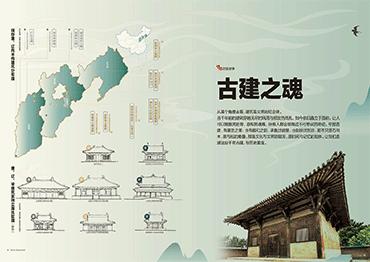From the majestic structures of the Tang and Liao dynasties (681-1125) to the delicate designs of the Song and Yuan dynasties (960-1368), existing examples of China’s traditional architecture are living fossils. Though only a few ancient temples from more than 800 years ago have survived, scrutinizing their designs carries immense research value, including the cap-and-block dougong brackets connecting beams and columns without nails, all with different shapes according to different dynasties. Other elements include the wooden ornaments carved in Sanskrit that adorn windows and how the gaze of a Buddhist Guanyin sculpture aligns precisely with an opposite pagoda. Since the 1930s, generations of Chinese architects trekked around rural China to discover remaining ancient architecture, among which are the Tang-era Foguang Temple in Xinzhou, Shanxi Province, the Liao-era Dule Temple in Tianjin and the Song-era Kaihua Temple in Shanxi. According to architect Liang Sicheng (1901-1972), ancient Chinese preferred building with wood, believing in the natural process of decay and rebirth.

 Old Version
Old Version